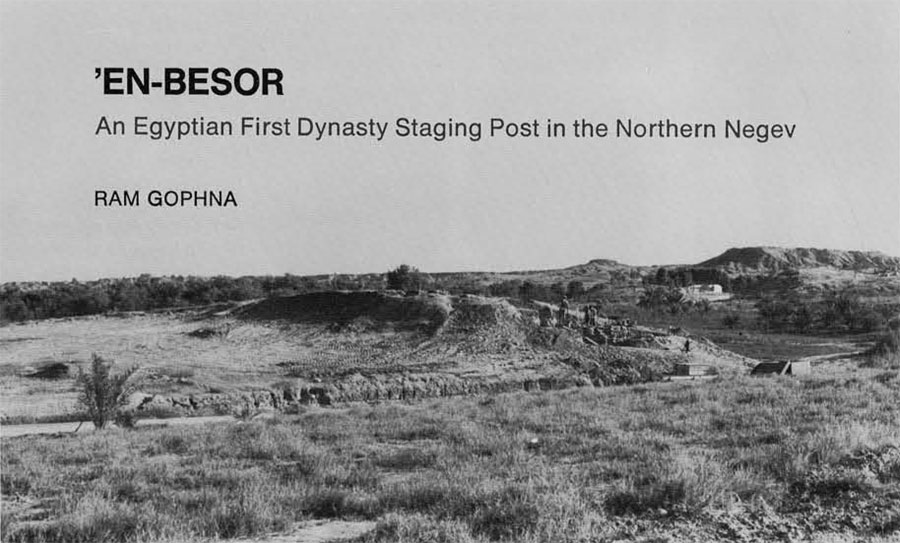
The lower part of the Besor Valley (Wadi Ghazza) cut its way through the flat loess lands of the northwestern Negev. To the west this region merges with the southern coastal plain. During the Chalcolithic period (fourth millennium B.C.) it was an integral part of a much broader subsistence area, extending also eastwards into the Beersheba Valley. These vast loess plains of the northern Negev were the southern limits of the Chalcolithic settlement in Palestine, but the Chalcolithic people also penetrated to Wadi Araba in order to obtain copper ores, and even to southern Sinai searching for turquoise. They maintained some sporadic commercial relations with the Predynastic (Naqada Egyptians.

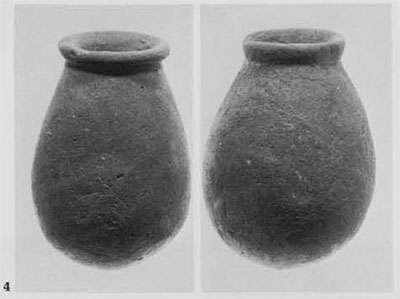

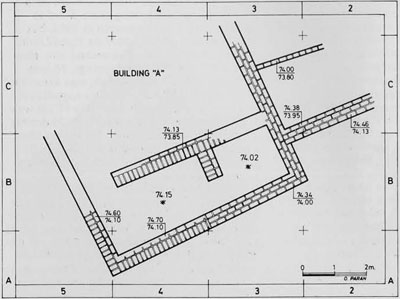
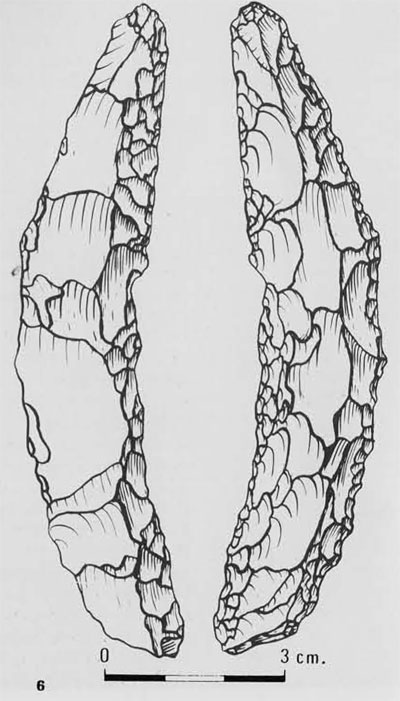
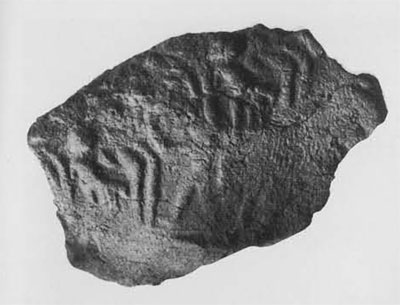
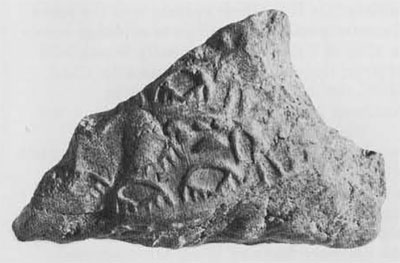
Following the abandonment of the Chalcolithic settlements of the northern Negev, the area was sparsely inhabited during the succeeding Early Bronze Age (ca 3200-2200 B.C.). Most of the large fortified settlements were then situated north of the above mentioned region, but its northwestern part may actually be considered in that period as the eastern edge of northern Sinai. Since antiquity, this desert stretch of land, between the eastern Nile delta and Palestine, has been a borderland, serving as a spring-board for both the Egyptian and Canaanite migrations, commercial expeditions and occasionally military incursions and invasions. Lately it has become evident that sometime during the Early Bronze Age the northwestern Negev was indeed a scene of interaction between groups of people coming from Egypt and the indigenous inhabitants. This may be deduced from the rich archaeological material which has been unearthed during the excavations and explorations carried out by the Tel Aviv University Institute of Archaeology and the Israel Department of Antiquities at three sites situated along the lower Besor Valley.
The first site is Taur Ikhbeineh. Lying on the southern bank of the Besor Valley (south of Gaza), it faces the ancient coastal road passing from Egypt along north Sinai to Canaan. The site, discovered in 1932, has been reinvestigated in 1977 by Itzhak BeltArieh and the author. The second site, situated above the ‘En-Besor springs, 18 kms. southeast of Taur Ikhabeineh, was excavated in 1930 by Sir Flinders Petrie’s expedition and was then designated as “Site H”; it was explored again by the author in 1976 during a brief salvage excavation. These two sites yielded Egyptian Predynastic (Naqada II) pottery and flints, mixed with local Early Bronze I material.
Most of the finds in the third site, ‘En-Besor, which is the main concern of this article, are dated to the later part of the First Egyptian Dynasty, i.e. to Early Bronze Age H. Like “Site H,” ‘En-Besor, about 500 m. to its southwest, lies very close to the ‘En-Besor springs. As a result of the several small-scale excavations conducted by the author since 1970, this site was found to be unique among the Early Bronze Age sites so far discovered in the northern Negev. It is a much eroded miniscule tell, about one-third acre in size, where four occupational strata have been exposed. Stratum IV, which is the earliest, may be dated to the end of Early Bronze I; it represents the first settlement at the site, when the nearby “Site H” had already been deserted.
Both Stratum III and Stratum II are attributed to Early Bronze II. Stratum I belongs to the Hellenistic period. Among the four strata at ‘En-Besor, only the remains of Stratum III are exceptional. When compared to the remains of Strata IV and II, it is obvious that Stratum III does not represent a local Canaanite village but an Egyptian settlement, established near the ‘En-Besor springs sometime during the First Dynasty. This conclusion is unavoidable when one considers the architectural remains, the various pottery vessels, the flint implements, a copper pin, a stone amulet in the shape of a ram’s head, and particularly the numerous cylinder seal impressions, all unearthed in Stratum III. Many of these objects were discovered in the debris of a building (Building A) constructed of sun-dried bricks laid directly on the ground without the stone foundations typical of the local architecture. The dimensions of the bricks (8 x 12 x 23 cm.) are uncommon in Canaan during the Early Bronze Age, but are identical to those used in Egypt during the First Dynasty.
All the pottery vessels (excluding some local Early Bronze Age hole-mouth jars) which have been found in Stratum HI seem to be of Egyptian origin; some are indeed typical of the Archaic Period (Dynasties I-II): storage jars, cylindrical jars, bag-shaped jars, and the so called “baking bowls.” The same may be said regarding the flint knives and sickle blades discovered in Stratum III.
Undoubtedly, the most interesting Egyptian finds unearthed in this stratum are some 60 tiny lumps of unbaked clay bearing First Dynasty cylinder seal impressions—the only such impressions from the Archaic Period which have been found outside of Egypt proper (except for one found in Nubia) and, indeed, the only ones to have been found outside the Nile Valley. They have been deciphered by Prof. Alan R. Schulman of Queens College, New York, who dates them to the later part of the First Dynasty, most probably to the reign of Den, the fifth monarch of the dynasty. The clay lumps from ‘En-Besor were probably used to seal various vessels, evidently for the most part of cloth or skin. Since the lumps also bear on their undersides imprint of strings, cords, knots and cloth over which the wet clay was placed before the seal was impressed, Professor Schulman argues that the seal impressions from ‘En-Besor appear for the most part to have been private seals of large and diverse groups of individuals, probably Egyptian officials.
The remains of Stratum III at ‘En-Besor are certainly exceptional in the context of excavations in Israel. The small size of the site, its proximity to the springs, the diversity of the Egyptian material, together with the fact that this is one of the few Early Bronze II sites in the northern Negev—all these factors indicate that the Stratum III settlement must be viewed as an Egyptian First Dynasty wayside station or staging post on the southern border of Early Bronze Age II Canaan. Some of the Egyptian pottery sherds and vessels are typical “kitchen ware,” and it is obvious that this ware was brought to the site together with various sealed bags containing provisions. The broken clay lumps bearing cylinder seal impressions found in Stratum III indicate that at least some of these provisions were consumed on the site.
The remains of the Egyptian First Dynasty settlement at ‘En-Besor are the earliest of their kind to be discovered outside the Nile Valley, A Third Dynasty Egyptian colony, engaged in mining and smelting copper, has been discovered and excavated at Buhen, in Nubia. What then was the aim of the Egyptians, already during the later days of the First Dynasty in establishing a settlement on the southern borderland of Canaan? It seems now most probable that the Egyptian settlement at ‘En-Besor was meant to serve as a transient settlement for Egyptian commercial or military envoys coming to Canaan in quest of olive oil, wood, asphalt or even copper. In the light of the recent discoveries of the Tel Aviv University Institute of Archaeology Ophir expedition to Southern Sinai, where I. Beit-Arieh explored a whole network of Early Bronze Age II settlements, it is now clear that their main purpose was the mining and smelting of capper. Were not the Egyptians who encamped at the ‘En-Besor springs royal importers of these copper products and other local produce during the time of the First Dynasty?
